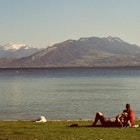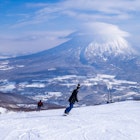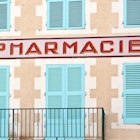
Apr 15, 2025 • 8 min read
Here’s how to plan a getaway between two of France's idyllic lakeside destinations.

Apr 15, 2025 • 8 min read
Here’s how to plan a getaway between two of France's idyllic lakeside destinations.

Apr 15, 2025 • 5 min read
Find medieval architecture, romantic vineyards and fairy-tale charm in France’s most beautiful and intriguing villages.

Mar 31, 2025 • 7 min read
We asked travel writers in France about their favorite under-the-radar vacation destinations. Break away from the crowd at these local holiday spots.

Mar 29, 2025 • 7 min read
With hidden coves, enviable surf spots and glamorous beaches, France is packed with gorgeous coastline.

Mar 13, 2025 • 10 min read
From soaring mountains to sparkling coastlines to medieval hilltop villages, France has something for everyone. Here are 10 places that stand out.

Mar 11, 2025 • 13 min read
This roundup of fabulous itineraries will take you through both France’s most beloved places and its lesser-explored corners.

Mar 10, 2025 • 6 min read
It's easy to assume familiarity in France, where it's ubiquitous in art and cinema. Here's the inside track on travel advice only French locals can give.

Feb 25, 2025 • 7 min read
A weekend in the south of France may conjure up thoughts of Cannes or St-Tropez, but if you’re looking to escape the hordes, Hyères is a unique hideaway.

Jan 24, 2025 • 8 min read
Cognac, on France’s Atlantic coast, feels effortlessly elegant but it’s rural, windswept and filled with medieval towns.

Jan 9, 2025 • 12 min read
(Warning: this article will make you want to book a trip.)

Dec 1, 2024 • 14 min read
Discover France’s best châteaux – from cliff-hanging Pyreneen forts to Loire palaces galore.

Oct 8, 2024 • 6 min read
The not-as-well-known but incredibly charming Beaujolais wine region has scenic vineyards, charming historic villages and a thriving artisan scene.

Sep 23, 2024 • 6 min read
From France's Les 3 Vallées to the après-ski of Whistler, here's our pick of the world's best places for snowboarders.

Sep 19, 2024 • 15 min read
Wine is the lifeblood of France. Here’s your ultimate guide to the different regions and how to visit them.

Sep 9, 2024 • 4 min read
This couple shifted their lives from Ireland to France and opened a guesthouse. Here's how it went.

Sep 3, 2024 • 11 min read
Plan your first Eurostar journey with our guide to routes, tickets, on board services and luggage.

Jul 30, 2024 • 6 min read
French pharmacies are a treasure trove of wellness and beauty products.

Jul 30, 2024 • 7 min read
Going to a supermarket while traveling can be a new cultural experience, especially in France. Here's what you need to know.

Jul 25, 2024 • 4 min read
Packing for a trip to France this summer means stylish outfits, comfy shoes, being sun-smart, and downloading these apps. Bon voyage!

Jul 1, 2024 • 6 min read
Senior Director of Publishing Laura Motta shows us how she threw together a quick, inexpensive weekend in Bordeaux, France.

Jun 2, 2024 • 8 min read
A real-life Renaissance Fair, Provins is a joy for history buffs of all ages – here are some reasons you should visit this UNESCO World Heritage Site.

May 30, 2024 • 6 min read
From tickets and terminals to queues and border crossings, here’s everything a first-time Eurotunnel user needs to know.